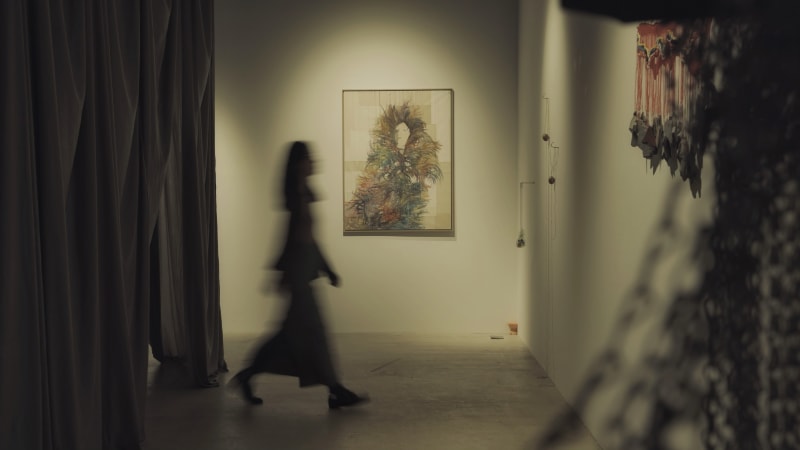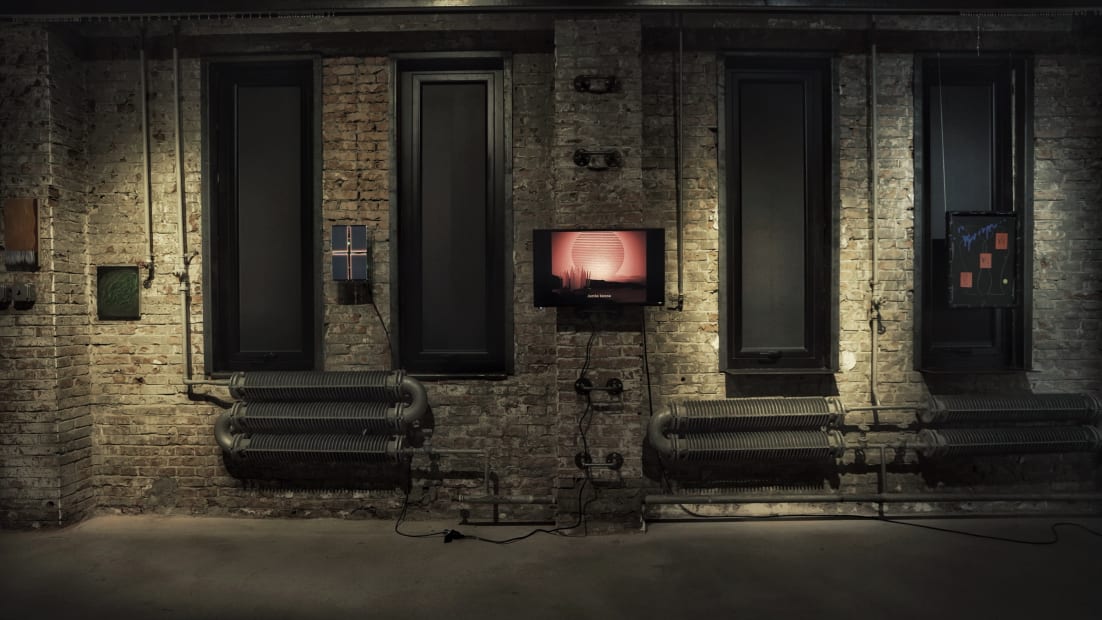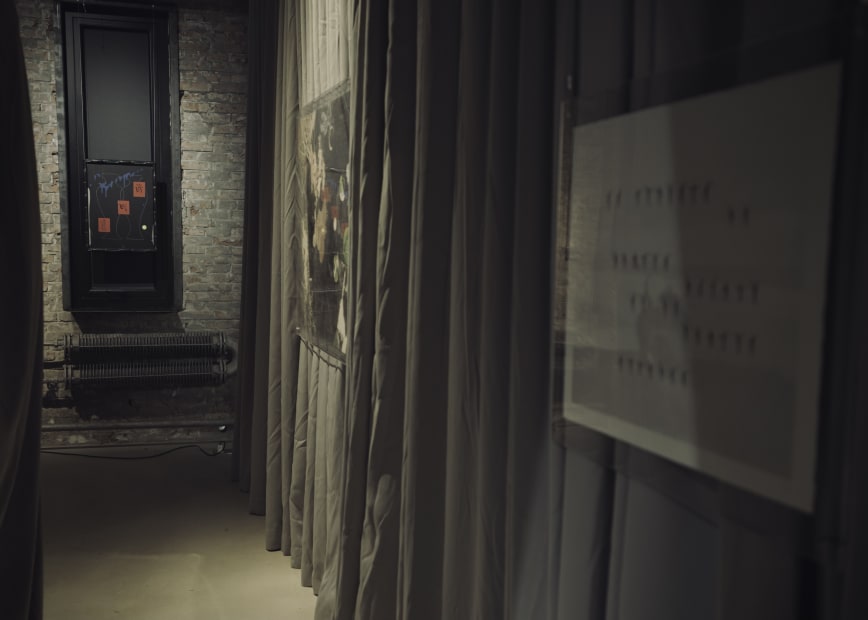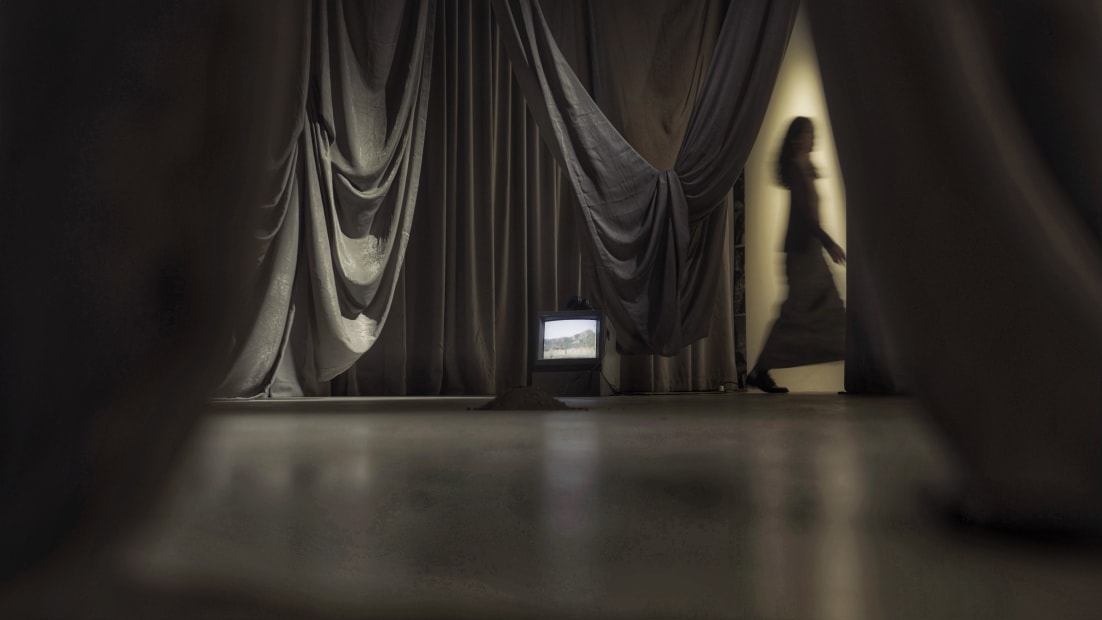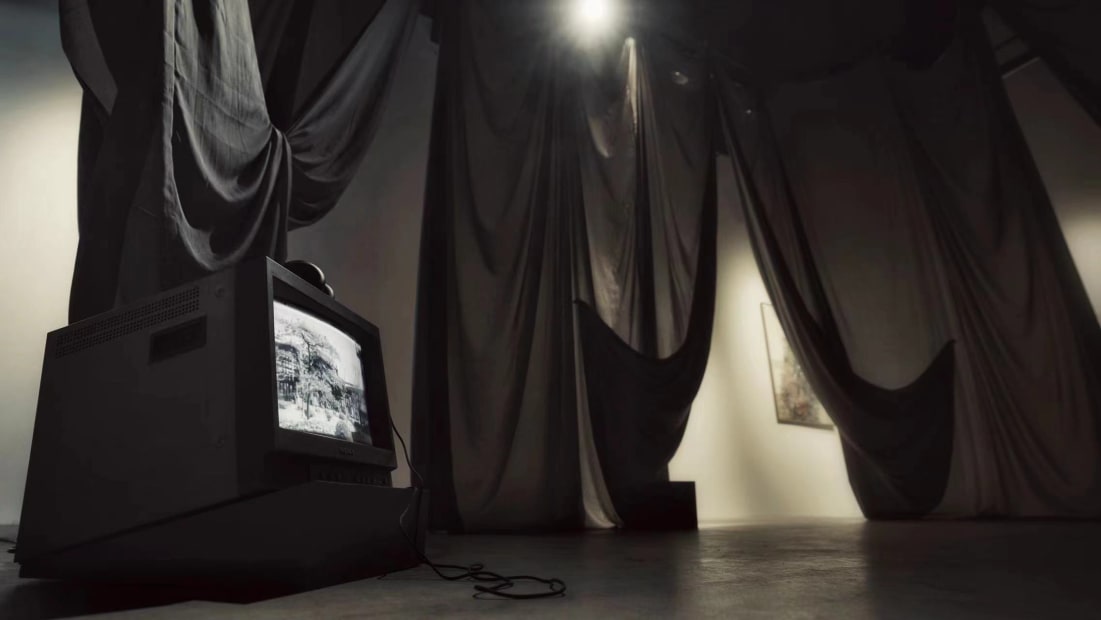Beijing|Atlas of Affinities: Vol.2, Scores for Movement: Vivian Caccuri, Miriam Cahn, Zhou Chen, Shiwei Ding, Di Fang, Fanny Gicquel, Zishi Han, Gordon Hall, Wei Hu, Han Shen, Tobias Spichtig, Tomas Vu, Ulla von Brandenburg, Yingying Zhu
Designating multiple relational proximities, the term affinity can seem either distant or close when viewed in an atlas that links two locations. As a gallery bilocated between Germany and China, the past years have been marked by the fundamental issues related to movement, the everyday routines and exchanges that are part of the existence between two spaces. The exhibition, Atlas of Affinities: Vol.2, Scores for Movement, presents the opportunity for exchange on the occasion of the reopening of China after the end of the Zero-Covid policies.
The exhibit maps out paths leading to and from the cultural and geographical region commonly referred to as Asia and Europe, prompting artists to explore and display their distinct affinities with the concept. The exhibition shows the willingness and determination of Hua International to facilitate exchanges between the gallery‘s artists, collaborators, and other professionals across two continents. Diasporic voices are involved as a strong statement that similar concerns and cultural affinities are consistent even through geographic gaps, and gestures with coded disobedience appear as collective and euphemistic criticism. The list of artists in the exhibition consists of people that we‘ve worked with before and those we haven‘t. Historical figures who inspire us and young artists. The exhibition also includes artists who we have wanted to invite to China but haven‘t been able to, and Chinese artists that we‘ve wanted to bring to Europe. The exhibition is neither a survey, nor a thematic group exhibition, but a statement of togetherness, an invitation to reflect upon new possibilities, and a celebration. About how our day-to-day lives have been shaped through restrictions and what new “scores“ can be written for everyday actions today. The concept for the show derives from Allison Knowles‘s concept of the “event score“: simple actions, ideas, and objects from everyday life that are recontextualized as art.
Like the melody in a duet, the list of artists in Beijing space overlap with some of those in Berlin. European artists who show their works in Beijing also offer resonant harmony. Vivian Caccuri presents her fabric works in both spaces. In her works, the flowing lines are like music scores, which are metaphors of the sound works that the artist also likes to create. The flow of people, labor, or personified things become the common topic of many artists, which we can find in Di Fang and Wei Hu’s video works and Shiwei Ding’s installation work. Similarly, Gordon Hall's small sculpture hidden in the corner crosses the boundary between space and objects. Tobias Spichtig’s work transforms the relationship between the body and the sculpture. In the paintings of the exhibition, Miriam Cahn’s works introspect the existing situation of human beings. And in Ulla von Brandenburg’s watercolor paintings, the main character that usually appears in her plays remain the same, with the dynamics and color unchanged. As a part of the new generation of painters, Han Shen also experiments with color repetition and change in flowing colors. Zhou Chen focuses on the spiritual dilemma in daily life, and with the sense of vulnerability coexists with the desire for protection, vase is not only the main character in his paintings, but also the leading role in his performance art. Chen will perform his work in the opening of the exhibition in Beijing space.
Integrating into one, these works create an "event score". With all the negotiation, cooperation and conflict between people and things, they maintain affinities in this exhibition atlas.
